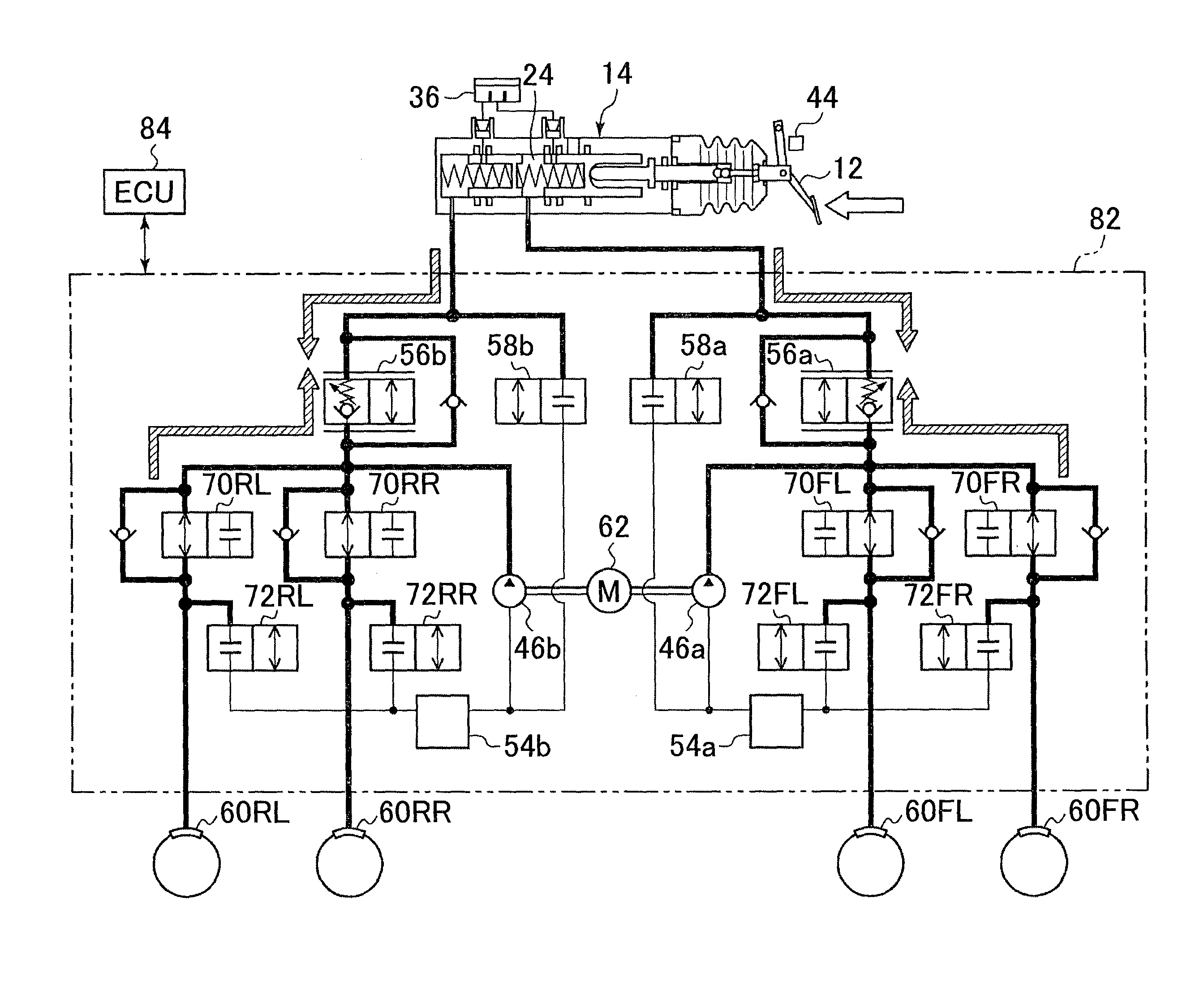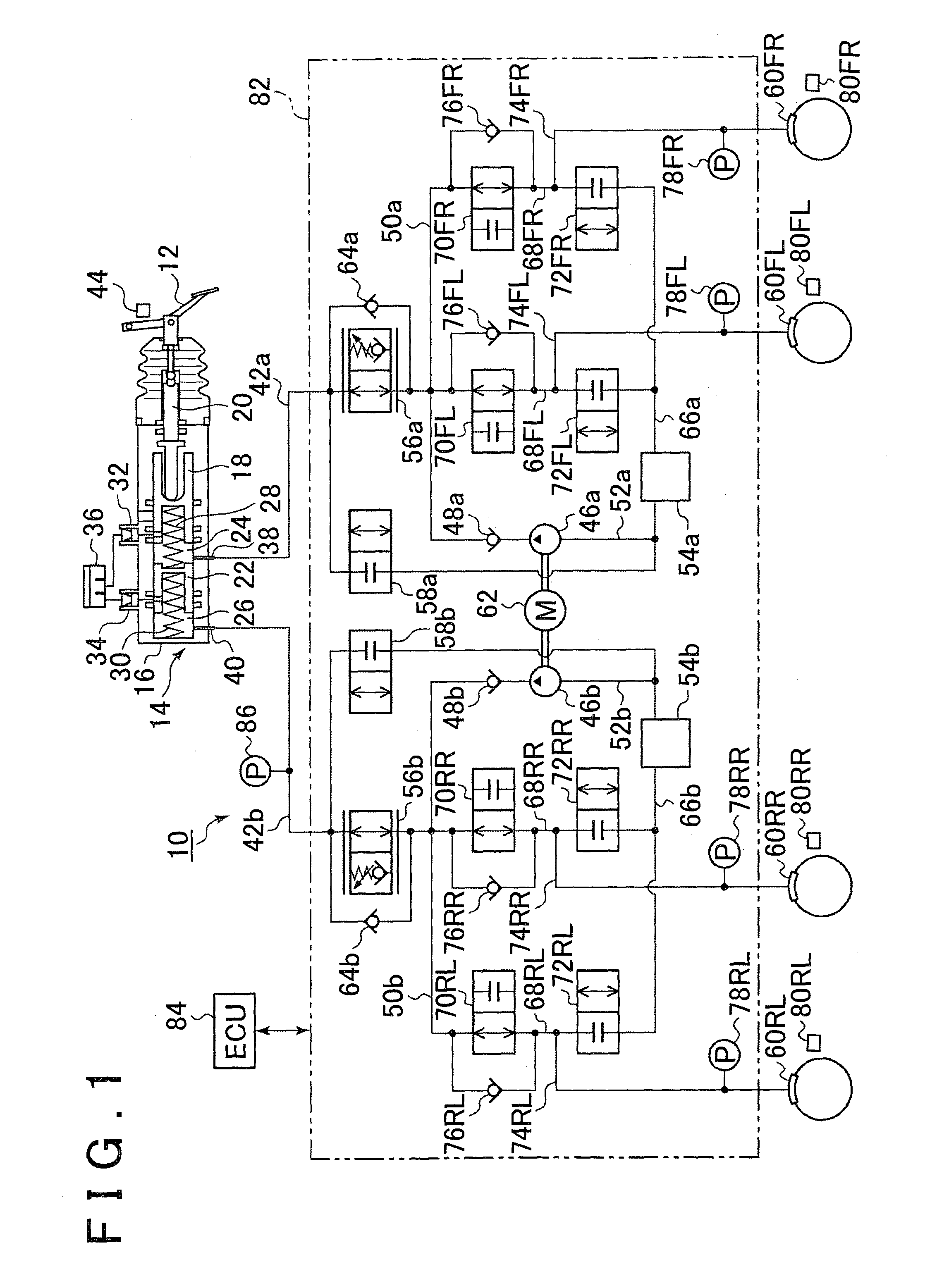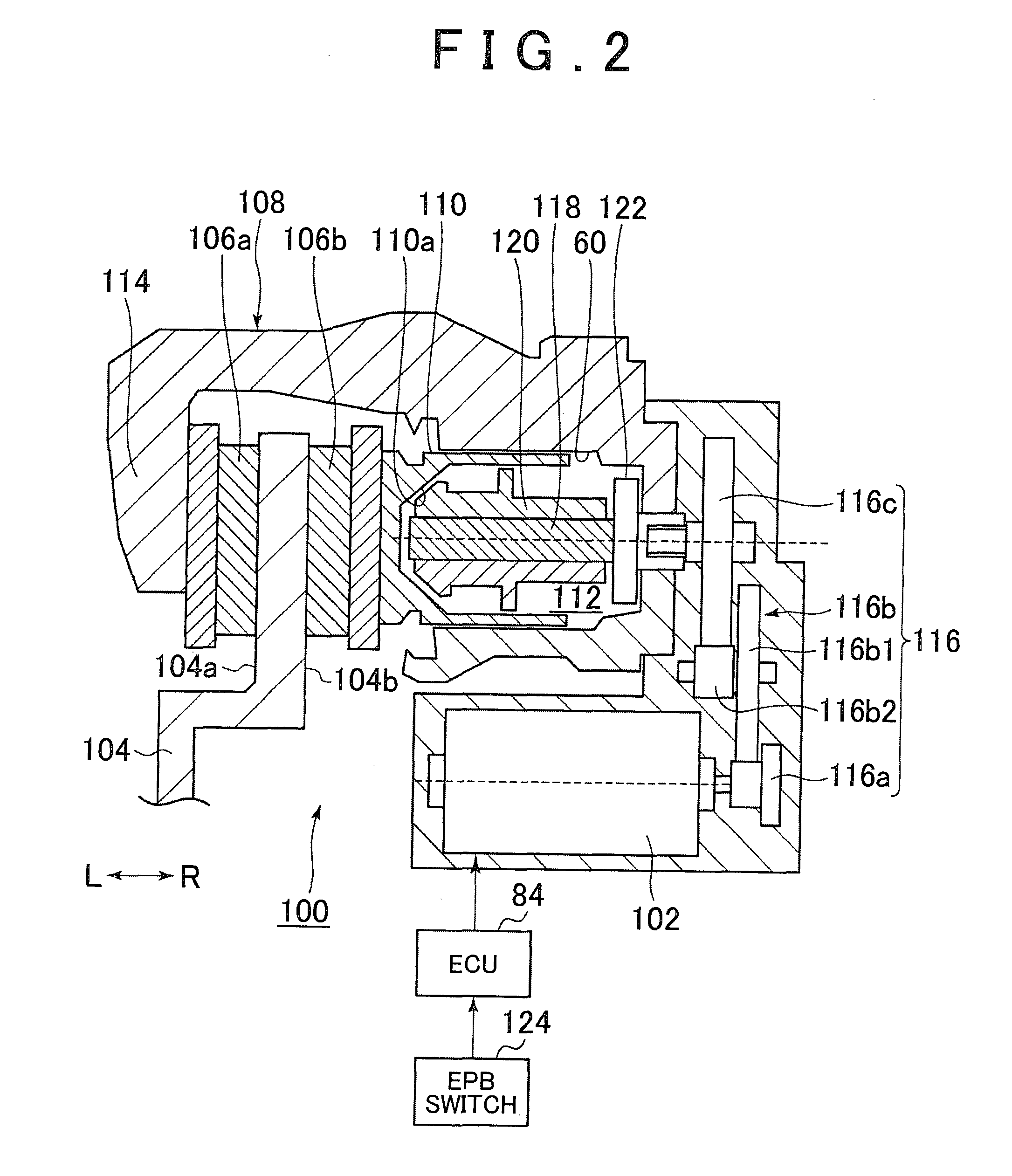Brake system
a technology of brake system and braking method, which is applied in the field of brake system, can solve the problems of vehicle occupants' discomfort, change in braking method, and so as to reduce the discomfort of the driver and reduce the change in vehicle stopping posture during the switching
- Summary
- Abstract
- Description
- Claims
- Application Information
AI Technical Summary
Benefits of technology
Problems solved by technology
Method used
Image
Examples
first embodiment
[0085]The first embodiment is explained below with reference to FIGS. 3 to 6. In the first embodiment, the case is considered in which the automatic maintenance control of the braking force, that is, the so-called BH, is performed as automatic braking force control when the vehicle is stopped. The BH also includes the case in which the braking force is maintained as a result of the ACC control. When the usual ACC is performed, brake control is executed with respect to all wheels. Where a predetermined period of time elapses after the vehicle has been stopped, the electric parking brake devices are automatically actuated and switched to parking brake control. In this case, for example, the switching is performed from four-wheel braking to two-wheel braking of the wheels on which the electric parking brake devices have been mounted. As mentioned hereinabove, in some cases, a switching shock (vibrations) caused by a change in the number of the braked wheels and a change in the braking ...
second embodiment
[0097]The second embodiment is explained below with reference to FIGS. 7 to 11. In the above-described first embodiment, the control is explained that is performed when a condition that the vehicle speed is equal to zero is fulfilled as the predetermined speed condition during the automatic braking force control, but in the second embodiment, an example is explained in which a control condition that a predetermined period of time has elapsed after the vehicle has been stopped is taken as the predetermined speed condition during the automatic braking force control.
[0098]FIG. 7 shows the hydraulic pressure state when the brake system 10 executes the automatic braking force control. This state is basically the same as the hydraulic pressure state shown in FIG. 3. When the automatic braking force control is executed, the ECU 84 drives the motor 62 and causes the pumps 46a, 46b to discharge the working liquid in a state in which the linear control valves 56a, 56b are closed, the pressure...
third embodiment
[0110]The third embodiment is explained below with reference to FIGS. 12 to 14. In the above-described first embodiment and second embodiment, the control is explained in which the condition that the vehicle speed is equal to zero (stopped vehicle), or the condition that a predetermined period time has elapsed after the vehicle speed has become zero (the vehicle has stopped) is taken as the predetermined speed condition during the automatic braking force control. In the third embodiment, a case is explained in which a control condition that the vehicle speed is equal to or lower than a predetermined speed is taken as the predetermined speed condition during the automatic braking force control.
[0111]The hydraulic pressure state when the brake system 10 executes the automatic braking force control (ACC control) is the same as the state shown in FIG. 7. Therefore, this state can be understood by referring to FIG. 7, and detailed explanation thereof is herein omitted. When the automatic...
PUM
 Login to View More
Login to View More Abstract
Description
Claims
Application Information
 Login to View More
Login to View More - R&D
- Intellectual Property
- Life Sciences
- Materials
- Tech Scout
- Unparalleled Data Quality
- Higher Quality Content
- 60% Fewer Hallucinations
Browse by: Latest US Patents, China's latest patents, Technical Efficacy Thesaurus, Application Domain, Technology Topic, Popular Technical Reports.
© 2025 PatSnap. All rights reserved.Legal|Privacy policy|Modern Slavery Act Transparency Statement|Sitemap|About US| Contact US: help@patsnap.com



